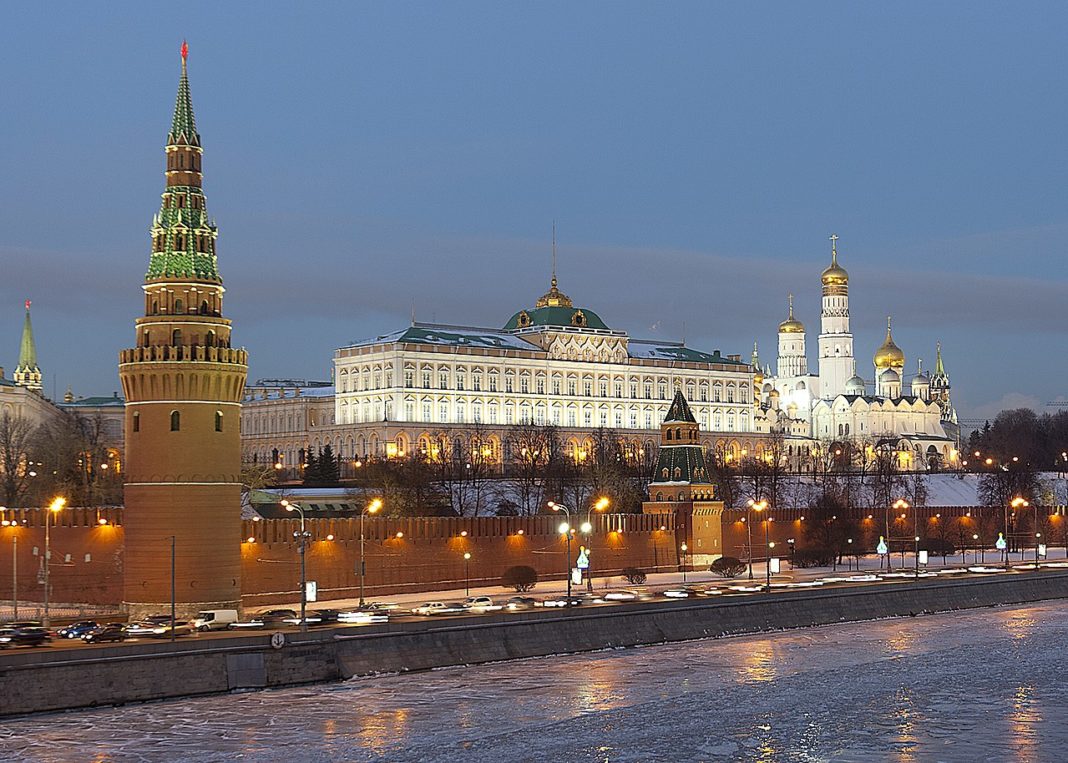The Kremlin is the best known of the kremlins (Russian citadels) and includes five palaces, four cathedrals, and the enclosing Kremlin Wall with Kremlin towers. In addition, within this complex is the Grand Kremlin Palace which was formerly the Tsar’s Moscow residence.
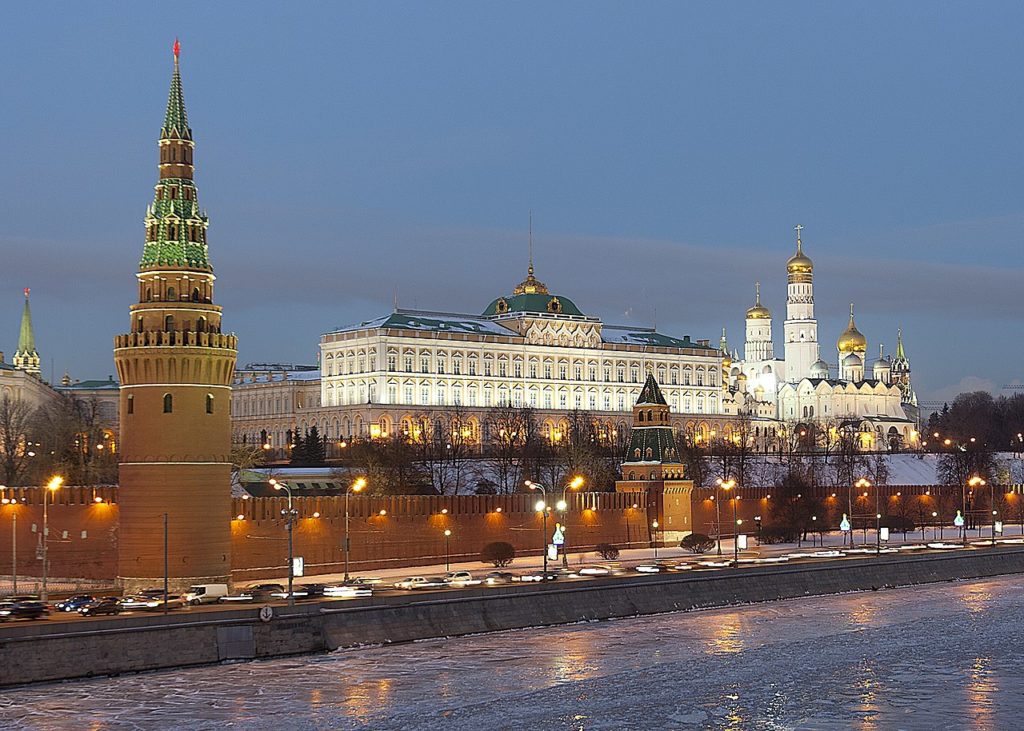
The complex now serves as the official residence of the President of the Russian Federation and as a museum with almost 3 million visitors in 2017. The Kremlin overlooks the Moskva River to the south, Saint Basil’s Cathedral and Red Square to the east, and the Alexander Garden to the west.
The existing Kremlin walls and towers were built by Italian masters from 1485 to 1495. The irregular triangle of the Kremlin wall encloses an area of 275,000 square meters. Its overall length is 2,235 meters, but the height ranges from 5 to 19 meters, depending on the terrain. The wall’s thickness is between 3.5 and 6.5 meters.
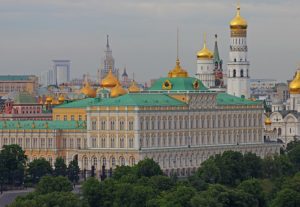
Originally there were eighteen Kremlin towers, but their number increased to twenty in the 17th century. All but three of the towers are square in plan. The highest tower is the Troitskaya, which was built to its present height of 80 meters (260 ft) in 1495. Most towers were originally crowned with wooden tents. The extant brick tents with strips of colored tiles date to the 1680s.
Cathedral Square is the heart of the Kremlin. It is surrounded by six buildings, including three cathedrals. The Cathedral of the Dormition was completed in 1479 to be the main church of Moscow and where all the Tsars were crowned. The massive limestone façade, capped with its five golden cupolas, was the design of Aristotele Fioravanti. Several important metropolitans and patriarchs are buried there, including Peter and Makarii. The gilded, three-domed Cathedral of the Annunciation was completed next in 1489, only to be reconstructed to a nine-domed design a century later. On the southeast of the square is the much larger Cathedral of the Archangel Michael (1508), where almost all the Muscovite monarchs from Ivan Kalita to Ivan V of Russia are interred. (Boris Godunov was originally buried there, but was moved to the Trinity Monastery.)
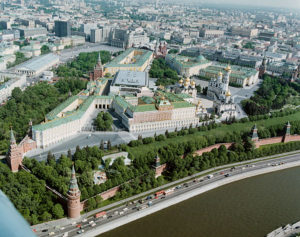
There are two domestic churches of the Metropolitans and Patriarchs of Moscow, the Church of the Twelve Apostles (1653–1656) and the exquisite one-domed Church of the Deposition of the Virgin’s Robe, built by Pskov artisans from 1484 to 1488 and featuring superb icons and frescoes from 1627 and 1644.
The other notable structure is the Ivan the Great Bell Tower on the northeast corner of the square, which is said to mark the exact center of Moscow and resembles a burning candle. Completed in 1600, it is 81 meters high. Until the Russian Revolution, it was the tallest structure in the city, as construction of buildings taller than that was forbidden. Its 21 bells would sound the alarm if any enemy was approaching. The upper part of the structure was destroyed by the French during the Napoleonic Invasion and has been rebuilt. The Tsar Bell, the largest bell in the world, stands on a pedestal next to the tower.
The oldest secular structure still standing is Ivan III’s Palace of Facets (1491), which holds the imperial thrones. The next oldest is the first home of the royal family, the Terem Palace. The original Terem Palace was also commissioned by Ivan III, but most of the existing palace was built in the 17th century. The Terem Palace and the Palace of Facets are linked by the Grand Kremlin Palace. This was commissioned by Nicholas I in 1838. The largest structure in the Kremlin, it cost 11 million rubles to build and more than one billion dollars to renovate in the 1990s. It contains dazzling reception halls, a ceremonial red staircase, private apartments of the tsars, and the lower storey of the Resurrection of Lazarus church (1393), which is the oldest extant structure in the Kremlin and the whole of Moscow.
The northern corner of the Kremlin is occupied by the Arsenal, which was built for Peter the Great in 1701. The southwestern section of the Kremlin holds the Armoury building. Built in 1851 to a Renaissance Revival design, it is currently a museum housing the Russian state Regalia and Diamond Fund.
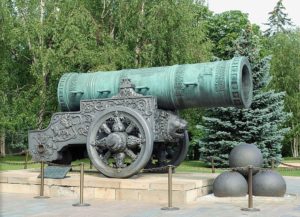
The Kremlin is open to the public and offers individual and group guided tours. Visible are the Armoury Chamber, Tsar Cannon, Tsar Bell, artillery pieces, and the exposition of Russian wooden sculptures and carvings.
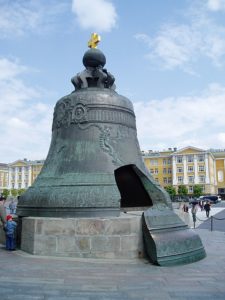
According to Wikipedia





